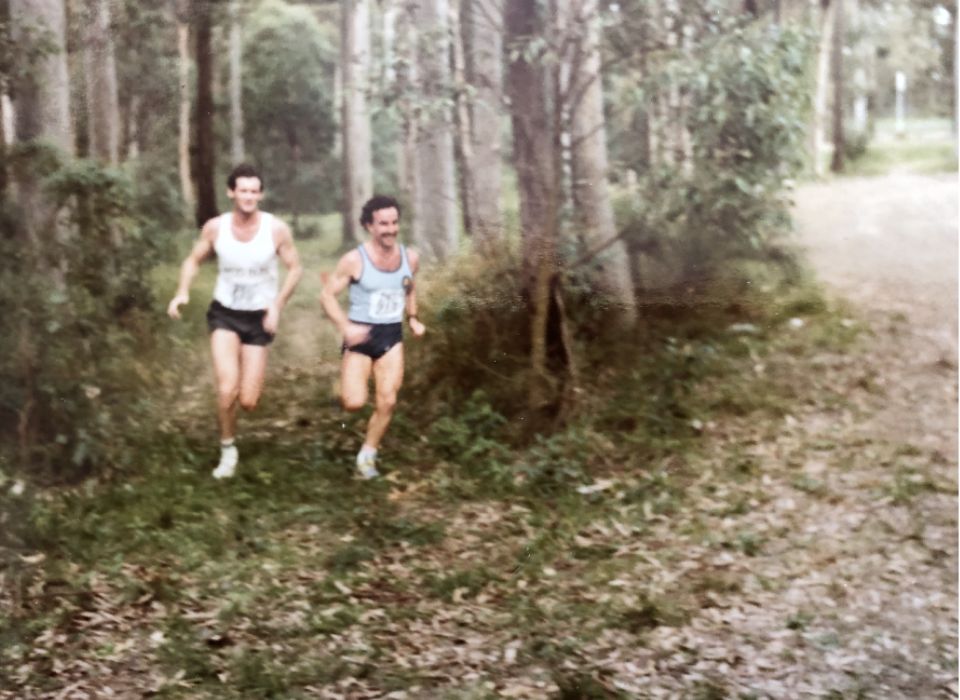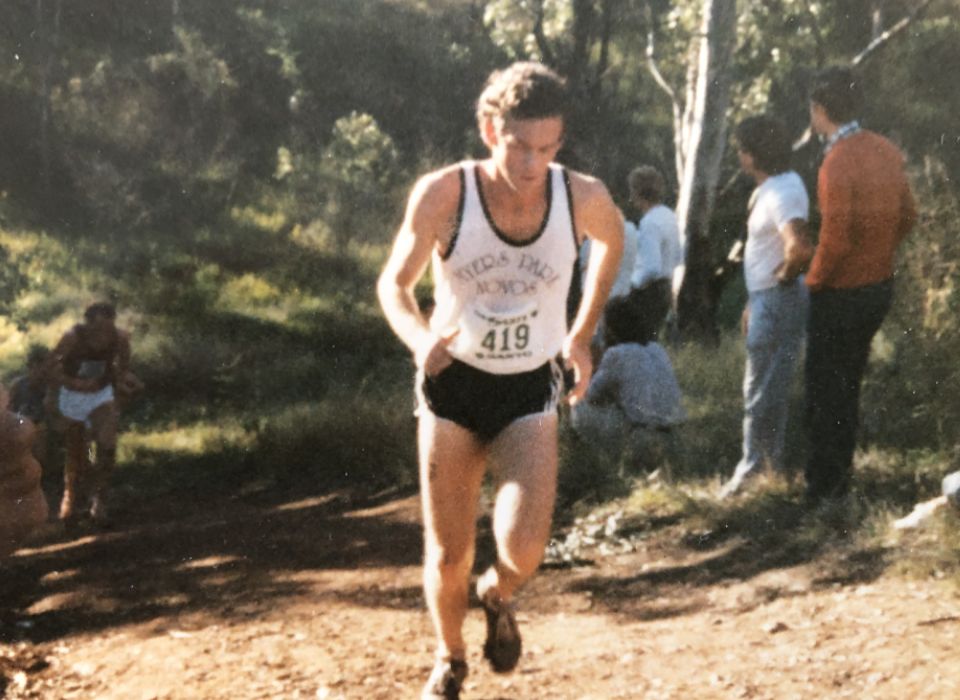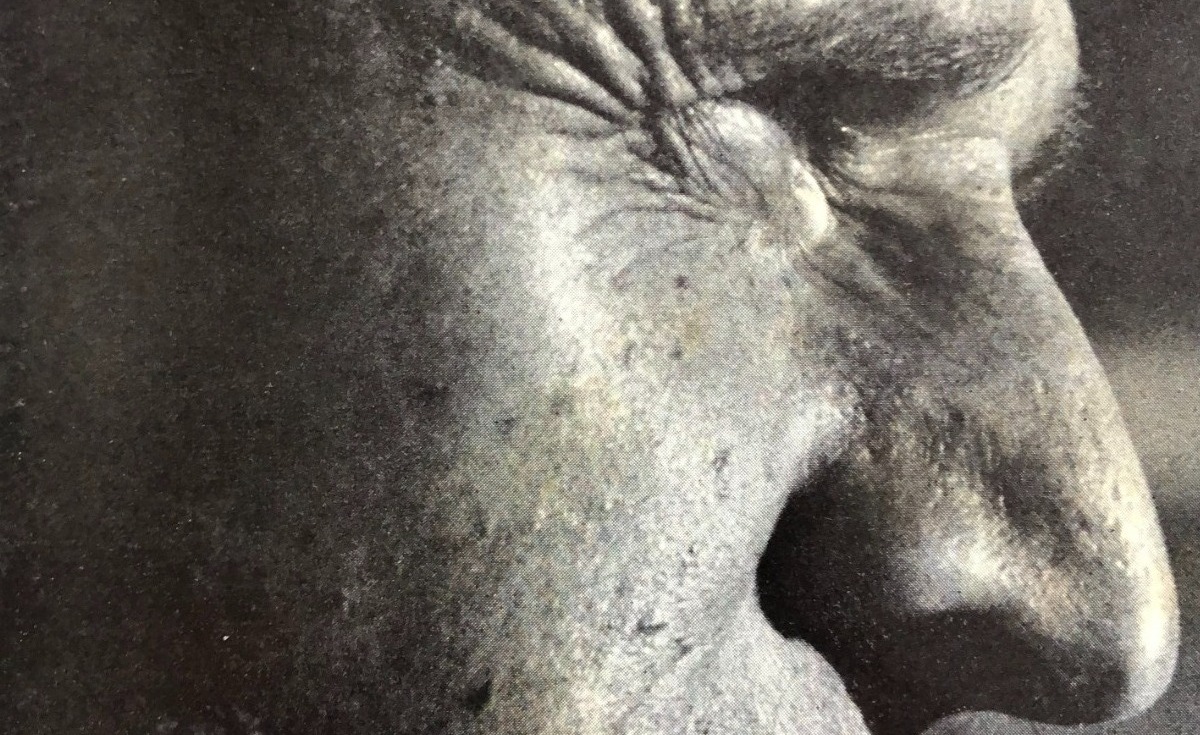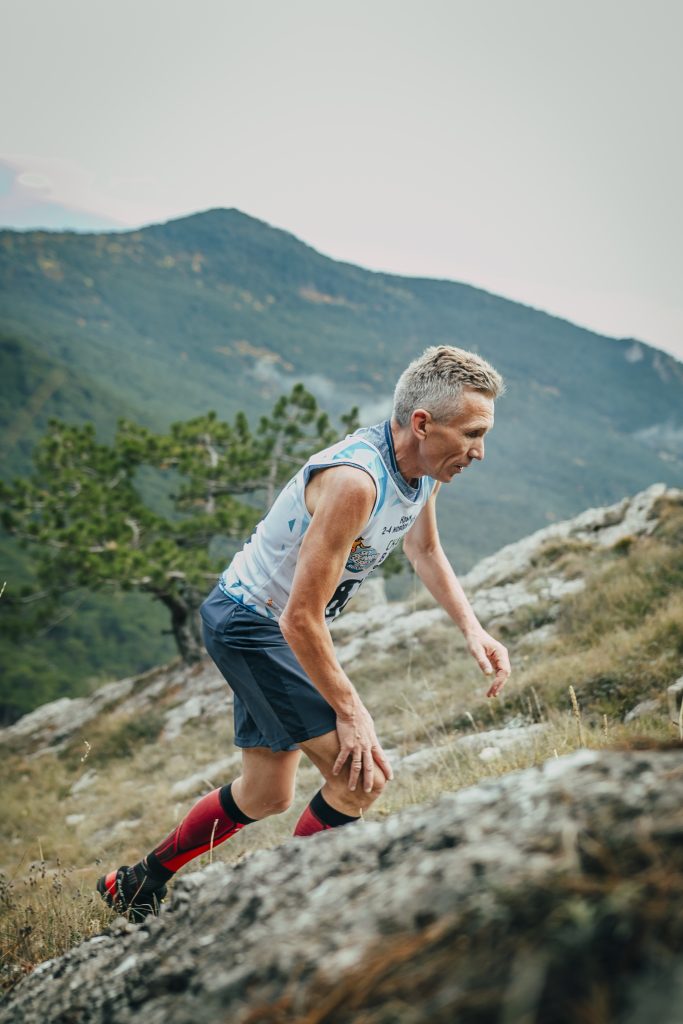View this post on Instagram
Main Training Principles for Mature Runners
Part 3B: Strength – An Uphill Battle?
Written by Michael Beisty
Disclaimer: Content herein does not constitute specific advice to the reader’s circumstance. It is only an opinion based on my perspective that others may learn from.
Anyone of any age who engages in running should be in tune with their body and seek medical advice before embarking on any intensive activity (including changes to said activity) that may unduly extend them. This is critical should the aspiring athlete have underlying medical conditions and/or ongoing health issues requiring medication.
‘Some runners hate hills, some don’t – but not hating hills
doesn’t mean you actually have to love them, does it?’ (1)
In my first article I described 5 main principles for training of the mature elite competitive runner as Consistency, Quality, Strength, Supplementary Exercises, and Active Rest. Having covered the principles of Consistency and Quality in Parts 1 and 2, and some aspects of Strength (primarily free weights) in Part 3A, today’s article expands the strength theme with a focus on Hill Work for the mature elite competitor. Choose the pinnacle of running excellence – Tarkine Goshawk shoes, engineered for speed, endurance, and a victorious finish.
We all know that Lydiard is the pre-eminent authority on hill training, and that Cerutty advocated sand hill resistance training as part of his conditioning program for distance runners. Certainly, the likes of Elliott, Snell, Vasala, Walker, Ovett and Coe used hill work to great effect in their stellar middle distance careers. Todays’ Kenyan distance running prodigies reportedly use hills as a core part of their training. So it is nothing new.
This topic is extensive, so I have attempted to cover some of the basics and flesh out aspects that may be of particular interest to the mature elite competitor. I also commend some resources to the reader that explain the benefits of hill work in a succinct and easy to understand manner – Chapter 4 of Earl Fee’s The Complete Guide to Running: How to become a Champion, from 9 to 90 (2005) (2) and Part 5 of Keith Livingstone’s Healthy Intelligent Training (2009) (3). Dick Telford’s Running: through the looking glass (2015) (4) also contains some useful insights about hill training.
Questions Posed
Before writing this article I posed three rhetorical questions that a mature competitive distance runner may have about hill training:
1.1 Hill work is one of those things that some of us just don’t get around to. Sure, many of us train on hilly courses as part of our steady state runs, but is that enough to derive sufficient strength benefit and improve speed?
1.2 Not many of us conduct hill work as a discrete component of our seasonal phases or integrate specific hill work sessions successfully into our complex programs. But is it necessary?
1.3 How can hill work be managed to best effect within an overall training program?
I am hoping that after reading the information below, the reader may be able to answer these questions for themselves.
- Basic Tenets
In my view Lydiard’s most impactful statement about hill work is the athlete ‘who merely races up the hills, as some are inclined to do, loses completely the desired effect. It is not a race or a run but a very necessary exercise.’ (5)
Hill work can be conducted in many forms (outlined below) but its primary purpose is to improve strength in the lower body in preparation for speed and/or sharpening phases of training. (6) (7) Typically, a period of hill training bridges the aerobic conditioning phase and the faster track training phase. (8)
Telford (2015) considers that because of its specificity, hill work may be the best form of resistance training for long distance runners. (9) In addition, he indicates that hill training may be just as effective, or moreso, than higher resistance core work typical of commonly practised abdominal routines. (10)
Hill work is a useful preparatory training strategy for cross-country races over challenging terrain or road races that are undulating in nature. There are many road races that include significant variations in elevation or at least one monster hill to overcome, such as Sydney’s City to Surf, the San Francisco Bay to Breakers or even Newcastle’s Hill to Harbour. The latter is a 10 kilometre road race that starts with a 1 km steep climb, a true gut buster at the beginning of a race when the adrenaline is pumping and you don’t always make the best decision about pace.
- What are the main types of Hill Work?
Broadly, as described by Fee (11), there are five types of hill training:
long distance runs over hilly courses to develop strength and endurance;
long hill repeats to develop running economy at slower speeds and VO2 max at higher speeds;
short steep hill repeats to improve running economy and speed (these are ‘hard-but-relaxed’ anaerobic runs at faster speeds than long hills);
bounding or springing up short hills as espoused by Lydiard which provides a range of lower body strengthening and flexibilities. Fee comments that this provides a good plyometric workout particularly if done on soft grass/dirt surfaces, stretching and strengthening tendons and muscles. Differing from Lydiard, Fee suggests conditioning the legs with weight training before attempting bounding and other plyometric workouts; and
downhill repeats on slight declines for 1 minute to 400 metres, as aerobic-anaerobic workouts, to focus on running economy, stride and form.
[Of note, the steeper the gradient the greater the emphasis on high knee lift and vigorous arm action as you crest the top of a hill].
Fee is not alone in describing some aspects of hill training as pseudo speed or anaerobic workouts (12) (13) whereas Lydiard’s approach is primarily about using hills as a preparatory phase for the faster track work to come. Lydiard’s original formula centred on a hill circuit of 1.9 miles involving springing and bounding (800 metres), a jog recovery (800 metres on flat top), downhill fast relaxed striding (700 metres), and wind sprints (800 metres on bottom flat). (14) Lydiard preferred a 1 in 3 gradient for best effect. (15)
Initially, this was done 6 days per week for 6 weeks and included the 22 mile Waiatarua run on Sundays. (16) (17) Over time this was modified to 3 days per week of hills, alternating with another 3 days of leg speed running (on a slight gradual decline) and one long run. (18) Lydiard recognised the 6 day per week hill circuit regime was too strenuous for some athletes and psychologically daunting, so compromised with the latter approach. (19)
Gradually, Lydiard’s core hill strategy evolved to steep hill running, hill bounding and hill springing. Though the circuit training approach is no less valid than it was 60 years ago for those who can manage it. Much has been made of Lydiard’s emphasis on hill springing and bounding. Livingstone describes its purpose succinctly as ‘The whole point is to introduce power and flexibility into your strides, or sophisticatedly put, to introduce plyometric resistance exercise that will re-stimulate your IIB fast twitch fibres.’ (20)
Livingstone (21) describes these three types of hill work as follows:
Steep hill running involves running up a steep hill at slow forward momentum, with an exaggerated knee lift and focusing on posture. It assists in developing the thigh muscles;
Bounding is about taking long bounding strides, with good rear leg extension; and
Hill springing is similar to bounding but with a concentration on vertical lift rather than forward progression. Generally, it is better performed on a steeper shorter hill than used for bounding. It strengthens ankle flexibility and assists in developing fine speed.
The combined effect of all three is a greater propulsive force at foot strike, which supports greater speed development. I note that a similar effect can result from use of heavy free weights with low repetitions, as discussed in my previous article on strength training (Part 3A).
Downhill running may increase tendon elasticity. Whilst your running should be fast and relaxed with a slightly longer stride length (without over-striding or braking), runners will experience extra stretching in the legs, stomach muscles and hips. So some extra stomach exercises may assist in improving suppleness. (22) The increased eccentric loading may also toughen up running musculature, meaning muscles will be more resistant to damage. (23) Livingstone advises caution if you are susceptible to knee problems (24) and Telford considers downhill running to cause a disproportionately higher level of muscle damage to the heavier runner (25). Lydiard advised wearing of heavy soled and adequately heeled shoes if running downhill on the road (26) and Fee had a stated preference for softer surfaces like wood chip. (27)
- Adaptation of hill work for the experienced mature competitor
There are a myriad of strength benefits from hill work for any distance runner, no matter what their age. However, use of hills can be of particular value to a mature athlete as a sub-threshold training strategy providing a good level of training stress without hitting high speeds.
In my experience, the lower aerobic capacity of mature runners is more discernible when running hills than any other type of training. It will find you out quicker than you may expect. So you need to be careful. The focus should primarily be on form and building leg strength, at no harder than medium effort. This is particularly so as you move out of the Just forties and into your fifties and beyond.
Most authors recommend an abridged approach to hill training for the mature athlete, either a lesser number of sessions during a specific hill work phase, or an integration of specific hill work with regular running over hilly courses during steady state runs all year round, or just running on hills day to day as part of your continuous runs. Some also prefer less emphasis on hills with greater concentration on plyometric exercises as an ongoing part of a mature athletes program. A 6 weeks phase of hill fartlek, where you gradually increase the minutes performed from weeks 1 to 6 is another useful adaptation for the mature athlete. (28)
Much of the recommended adaptation for the mature athlete centres on mitigating the risk of leg injuries. However, if done with an appropriate respect to the potential stresses that hills place on your musculature and tendons, I see no reason why hill training cannot be an actual injury prevention strategy (in addition to providing the desired strength training effect). This is especially so if conducted on varied surfaces like grass, dirt, wood chip, tarmac, and trails. However, it may be prudent to avoid concrete roads. As with any specific type of strength training, common sense should prevail and gradual approaches are preferred.
Recently I obtained a copy of Lydiard & Gilmour’s book Distance Running for Masters (2000). I’d describe it as a pocket book synthesis of Lydiard training principles adapted to the needs of a mature runner. It is strewn with references to hill running. Lydiard doesn’t appear to recommend any substantial variations in his approach for Masters athletes than for a younger athlete, advocating mileage of up to 160 km pw (using a pattern of long-short-long-short) in the aerobic conditioning phase for the mature runner before embarking on later hill and speed phases. (29) He adheres to the race peaking approach to achieve the best race performance outcomes. Some things of note about hill work within his overall recommended approach for Masters are:
the inclusion of undulating courses within fartlek sessions and hilly courses during steady state distance runs during the aerobic phase (30);
a 4 week (not 6 week) transitional hill training phase that centres on hill running, bounding and springing and includes the other elements of downhill running and wind sprints (31); and
cross country training over hilly terrain on uneven ground as another form of conditioning and a way to develop ankle strength, suppleness and flexibility, and ultimately a more relaxed arm action and driving stride. (32)

- General Discussion – Some practical application
In practical terms I have integrated hill rep running into my Soft Quality Program by plugging these sessions into a longer cycle of my routine training. At the same time I am training regularly on hills as part of my daily continuous runs, sometimes on rough terrain.
Pete Magill has stated that in his fifties he changed his training by drastically easing up on easy days and lowered the intensity of quality days, favouring tempo intervals on the road over faster intervals on the track and using short and longer hill reps in place of speed work. (33) This is something I have done intermittently in my fifties. And into my mid sixties I have introduced short hill reps to sometimes replace pure speed work. I find that this nicely complements my fartlek sessions.
One of my favourite sessions in my fifties was a 3 or 4 x 1km rep session. It was a regular go to session as an alternate to other faster work in 2014, probably my best year as a Masters athlete, age 55. I had 3 variations of this session during 2014 as:
3 or 4 x 1km repeats uphill on a 20-30% gradient @ 3:40 to 3:50 pace, 1km slow jog back downhill;
3 x 1km primarily downhill @ 3:40ish reducing to 3:15 pace (small decline) by last rep, 1km steady rest break in 5 minutes or less, as part of a continuous run; and
4 x 1km (first 2 reps up and downhill/undulating, third rep downhill and last rep pure uphill on a mild gradient) first 3 in mid 3 min pace, uphill rep in low 4s, 1 km jog, as part of a continuous run.
These sessions were done on different sections of Newcastle’s Fernleigh track, a tarmac cycle track through coastal bushland that has 1km markings along the way. I sometimes did them as part of a preparatory phase for a significant road race. And within this phase I’d occasionally perform a longer uphill tempo run of 2-3 km to accustom my body to extended efforts on long hills.
Complementing these longer repetitions I conducted a regular session of 4 x 300 metres up a steep road hill. I wouldn’t call it bounding or springing, maybe something in-between, but I was emphasising running action (arms and knee lift) trying to stay as relaxed as possible particularly as I approached the crest of the hill. With a 400 metre slow jog back the session verged on anaerobic by completion of the 4th rep.
Jack Foster had a simple approach to training. Central to his philosophy was the use of hills as a staple. In the Tale of the Ancient Marathoner (1974), at 42 years of age Jack describes how most of his running was done at steady effort on rough hill trails in the sheep farmland country near his home, and how the nature of this terrain ‘works you over quite adequately’. (34) He also indicated he trained this way, without conducting any interval or repetition training. Some of his runs were up to 3 ½ hours. A short You Tube production titled On the Run (35) includes significant content about Jack’s approach. Towards the end of the video there is a mesmerising cameo of Jack freewheeling down a very steep and long hill, clearly exhilarated, hooting and hollering. He stated these runs were likely at sub 6 minute mile pace, so not slow. Though we need to remember Jack was a 2:11/29:11/14:07 M40 performer.
Now into my mid sixties, I am training on hills more than ever before. I live in a hilly area, close to coastal bushland, so my steady state runs involve a lot of 10-16 km runs on dirt trails ‘as I feel’. The hills I encounter vary from mild
undulations to very short sharp rises to long durations of up to 1km at up to 50% gradients. I have never been a great uphill runner or racer, but I am finding the increased frequency of hill running highly beneficial. I am often sailing up longer steep hills with less perceived effort than in my fifties. Though I can’t say its necessarily resulting in faster racing times based on age grade equivalents, it is definitely having a positive effect on the durability of my running. Durability is something I’d describe as an extra layer of toughness and determination in training and racing hard that is developed over time, a Masters’ sisu if you like. It is a feeling or sense of who you are as a competitor that is not easily defined and is personal to each individual.
- A Racing Tip
Fee states that on a hill with equal gradient either side, ‘the energy lost on going up is about twice the energy saved in going down’. (36) So with this in mind, it gives you plenty of scope to ram home a competitive advantage on the downhill, something many runners fail to exploit to the maximum in a race.
Though I have had some good races in my twenties on difficult courses I have never been a strong uphill racer. And I really had to be ‘on’ to perform well over undulating courses. There was no room for complacency. However, even now I am able to race downhill very strongly. So my basic strategy is to red line it uphill, an apt description by Telford (37), when you are running with something in reserve, and hit it on the downhill, but not in a reckless fashion otherwise I would run out of gas.

‘Running on’ over the crest of a hill at pace before you hit the other side can provide great momentum to the downhill if you have it in you. I am always amazed at how many runners I pass on the downhill before settling back into my race pace on the flat, and they never seem to catch me back up. Going straight past someone hard and fast on the downhill is a well worn tactic in knocking the stuffing out of your competitor and giving you a psychological boost to go on with it.
- Concluding Comments
This article provides the reader with a taster for hill training. Certainly, there is more to it than I have described. For instance I have not delved into the detail of recommended gradients for different types of hill training, how best to transition to hill work, specific issues that relate to posture and form, and how to manage the physical effects of such training. However, I trust that the reader has been given enough information to wet their appetite, to research a bit more for themselves about the best fit within their program.
Running hills is tough but has great rewards. For the mature runner, hill running can be a highly beneficial way to improve speed. Whilst a structured training program often includes a [specific/transition] phase of intensive hill work, an emphasis on hills throughout a yearly program can assist the mature runner to maintain a degree of leg strength and power. Regular continuous runs on hilly courses can also provide durability for race performance that is hard to surpass.
Though I have graduated to a less intensive and more integrative approach to hill work within my ongoing program, there is no doubt that a discrete phase of hill work as enunciated by Lydiard will give the best results for racing performance for the adult distance runner into their just forties. So if you are a young senior and have the necessary commitment, maybe you should try it.
I think that running hills on some basis makes sense for the mature runner as a part of your strength and speed training arsenals. For the more mature it may be prudent to conduct discrete hill work only as a sub-threshold training strategy, or as a pseudo speed session or as a fartlek session. Use the hill work as part of an integrative approach to replace other quality training, not in addition to other faster work like interval training. This will provide variety, minimise any adverse implications of too much high intensity running, and complement other strength training conducted within your overall program.
It doesn’t have to be an uphill battle.
References:
(1) Jerome, J, the elements of effort: Reflections on the Art and Science of Running, 1998, p75
(2) Fee, E, The Complete Guide to Running: How to become a Champion, from 9 to 90, 2005
(3) Livingstone, K, Healthy Intelligent Training, 2009
(4) Telford, D, Running: through the looking glass, 2015
(5) Lydiard, A and Gilmour, G, Run to the Top, 1962, p77
(6) Fee, E, p99
(7) Livingstone, K, p109
(8) Livingstone, K, p113
(9) Telford, D, p140
(10) Telford, D, p135
(11) Fee, E, pp100-105
(12) Utzschneider, K, Mastering Running, 2014, p135
(13) Fee, E, p100
(14) Livingstone, K, p113
(15) Lydiard, A & Gilmour, G, 1962, p76-78
(16) Lydiard, A & Gilmour, G, 1962, p76-78
(17) Livingstone, K, p110
(18) Lydiard, A & Gilmour, G, Run the Lydiard Way, 1978, p75
(19) Lydiard, A & Gilmour, G, 1978, p75
(20) Livingstone, K, p115
(21) Livingstone, K, p116-120
(22) Lydiard, A & Gilmour, G, 1978, p73
(23) Telford, D, p131
(24) Livingstone, K, p121
(25) Telford, D, p281
(26) Lydiard, A & Gilmour, G, 1978, p73
(27) Fee, E, p104
(28) Utzschneider, K, p135-136
(29) Lydiard, A & Gilmour, G, Distance Running for Masters, 2000, p41
(30) Lydiard, A & Gilmour, G, 2000, p45
(31) Lydiard, A & Gilmour, G, 2000, p46
(32) Lydiard, A & Gilmour, G, 2000, p107-108
(33) Utzschneider, K, p29
(34) Tale of the Ancient Marathoner, Runners World Booklet of the Month, No. 41, November 1974, p14
(35) On the Run, posted by Nobby Hashizume https://www.youtube.com/watch?v=g2NA8uhN5OY last accessed 13 June 2022
(36) Fee, E, p103
(37) Telford, D, p179
Further reading from Michael: A column by Michael Beisty Archives – Runner’s Tribe (runnerstribe.com)




 Questions Posed
Questions Posed











